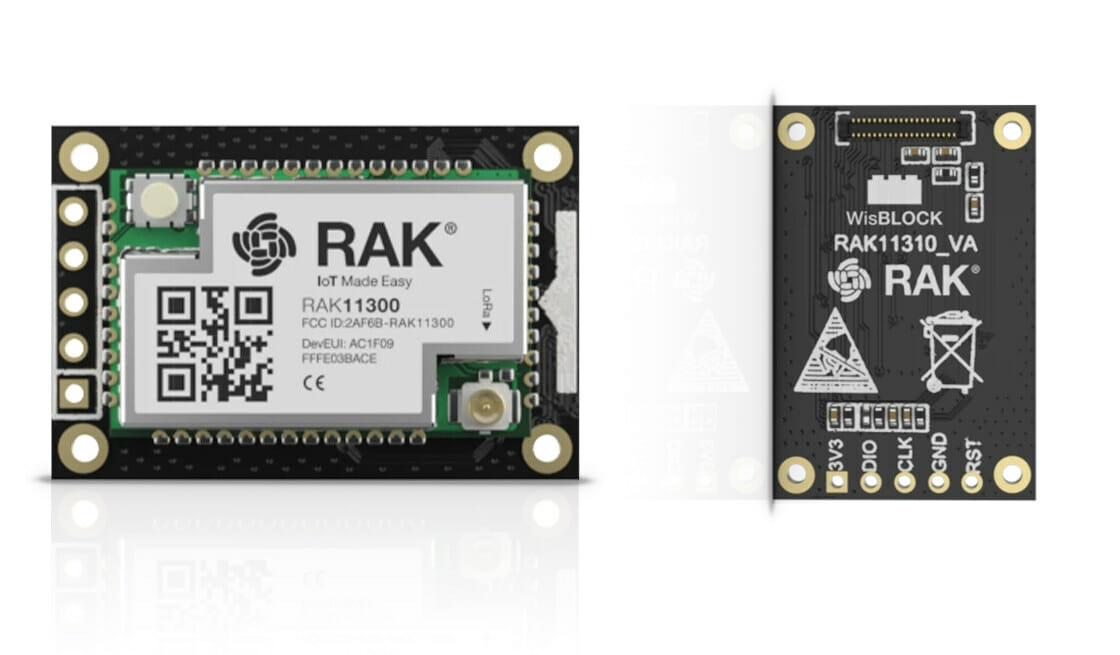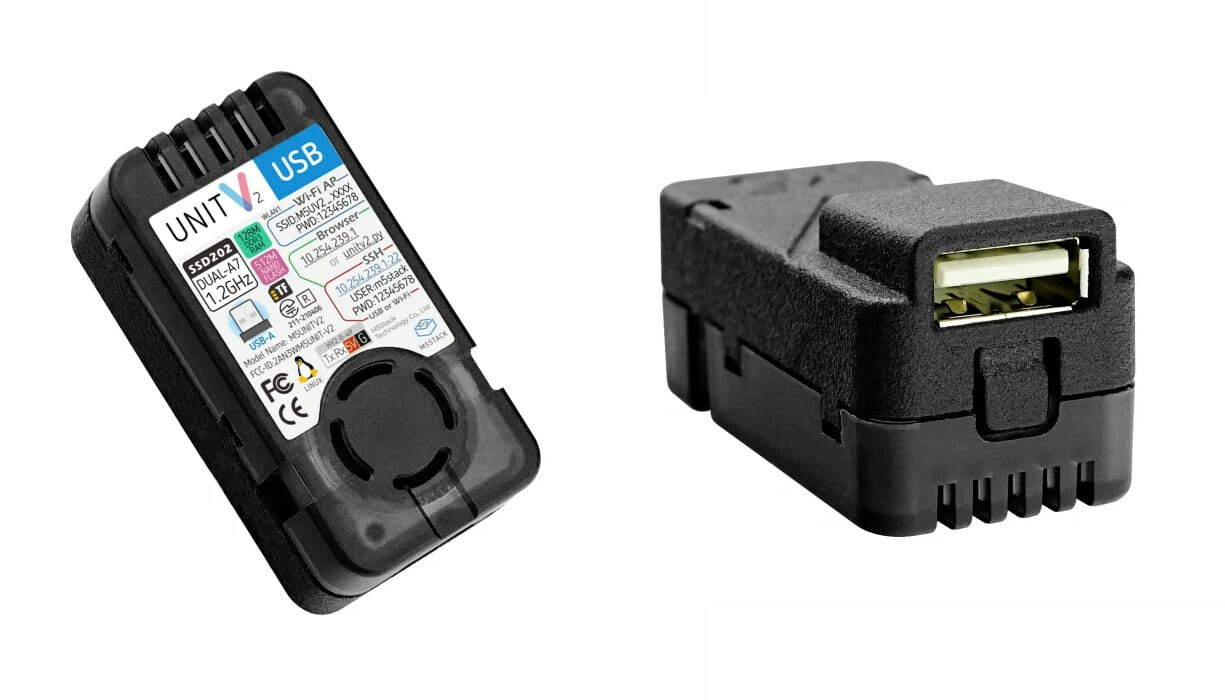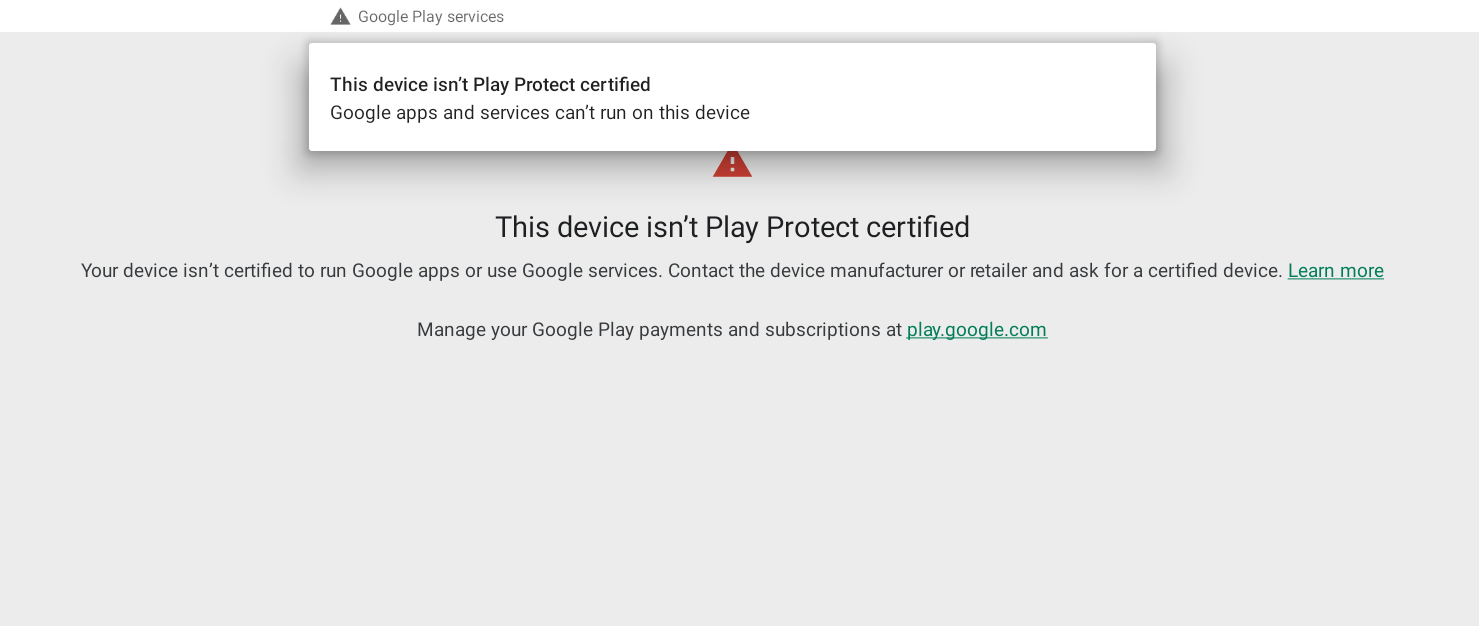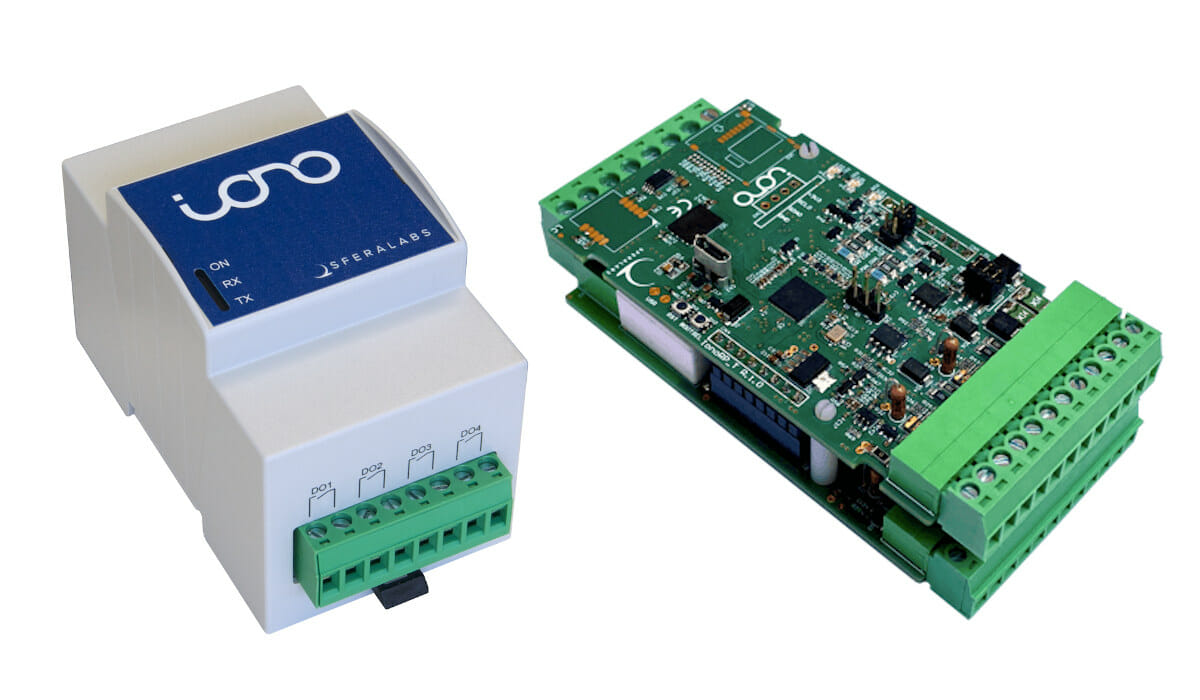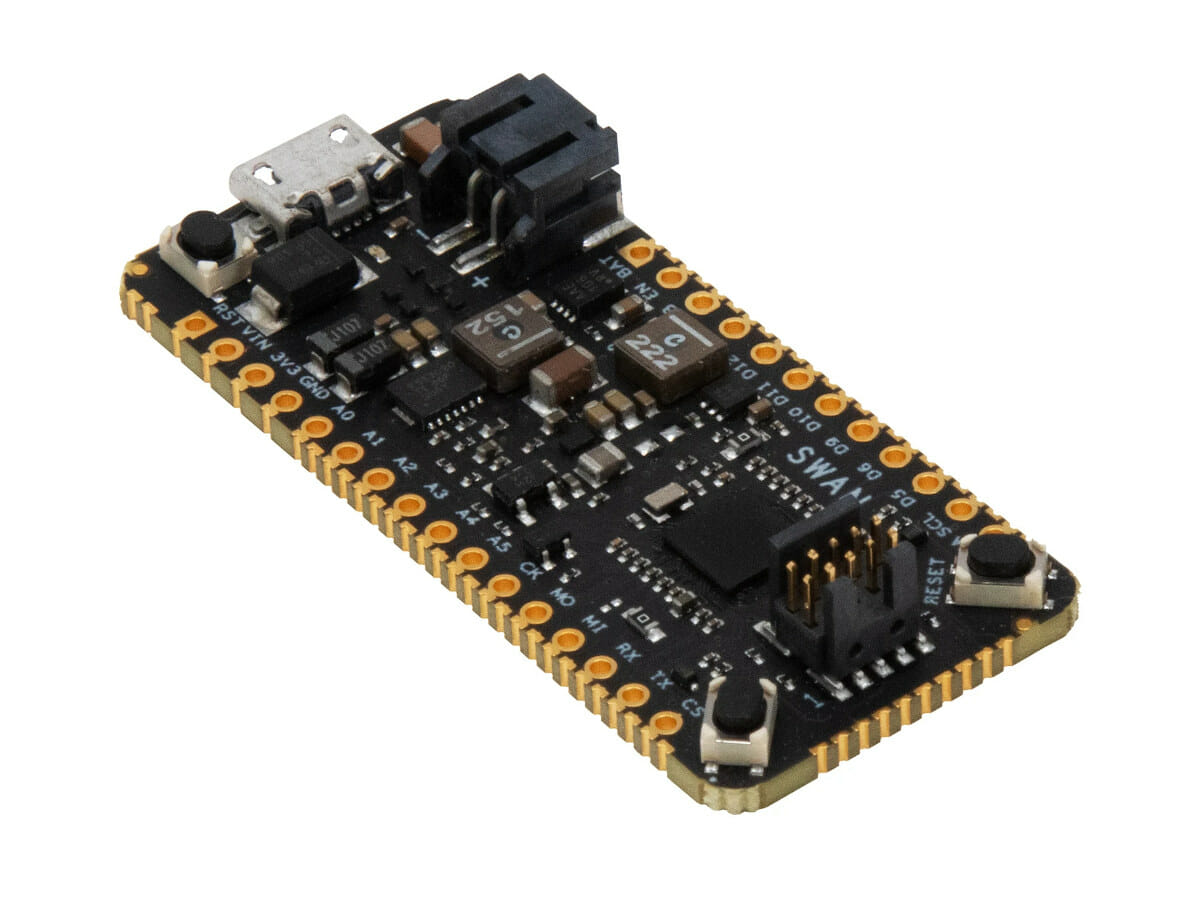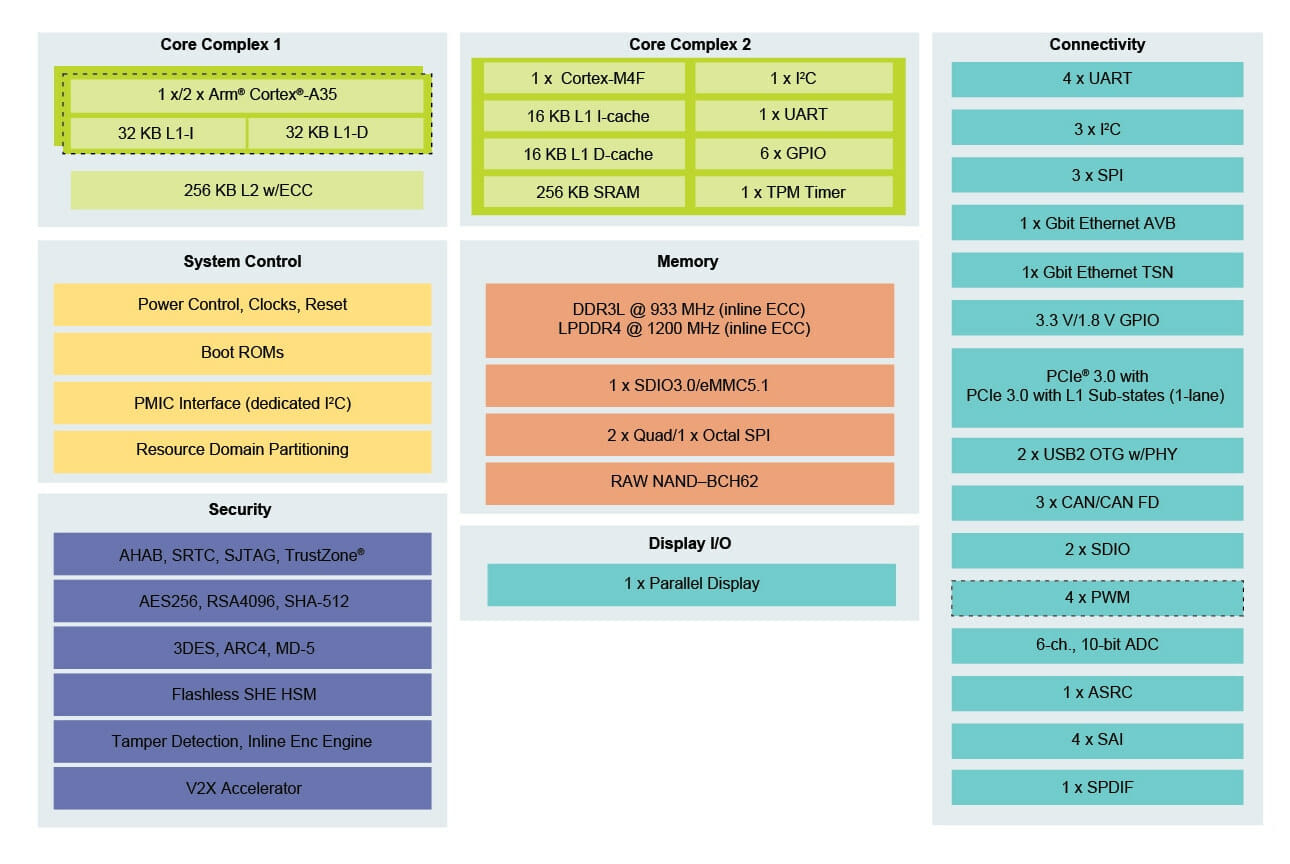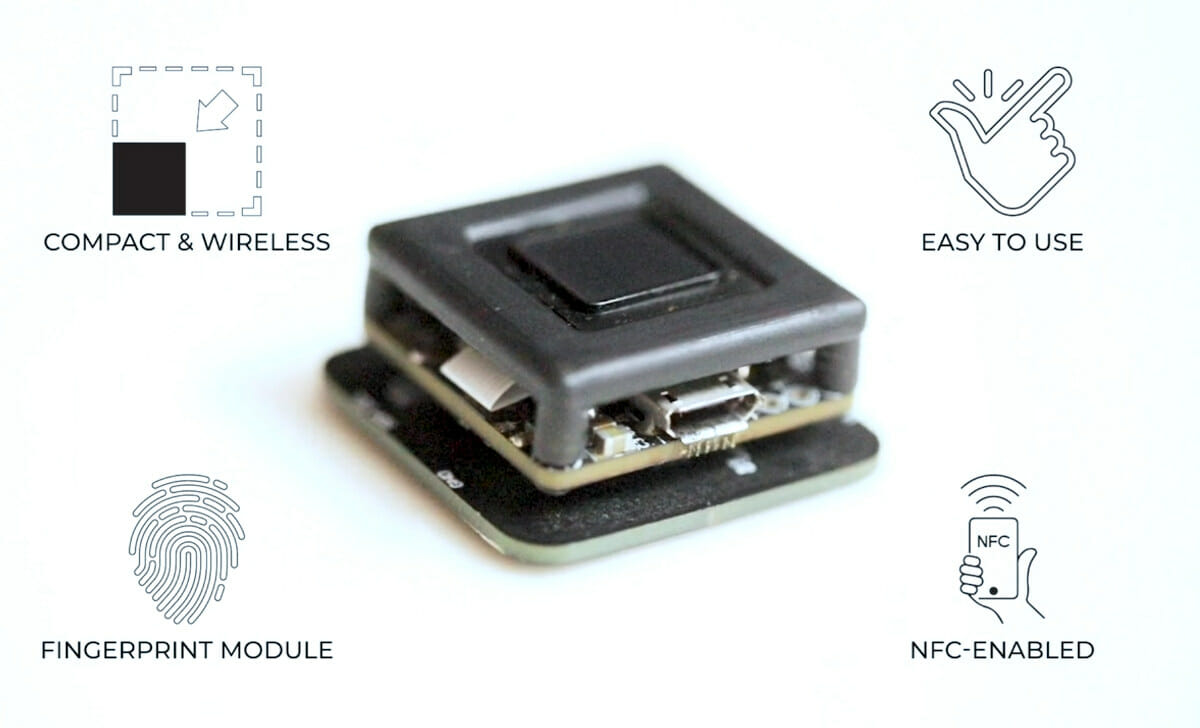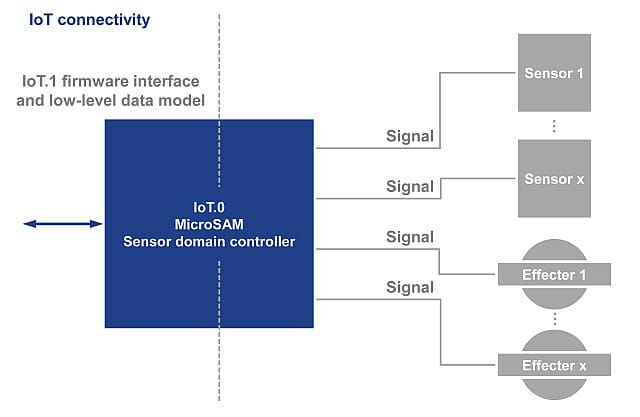RAKwireless has just launched the RAK11310 WisBlock LPWAN Module with Raspberry Pi RP2040 MCU and LoRaWAN connectivity, as announced after launching 14 new WisBlock modules for IoT prototyping last July. The RAK11310 module was introduced as part of the “Just Track It RAK Autumn Launch 2021” event together with the smallest WisBlock Base Board so far, as well as 11 new Wisblock modules which bring the total to 47 modules. RAK11310 – Raspberry Pi RP2040, LoRaWAN connectivity RAK11310 specifications: RAK11300 WisDuo LPWAN Module MCU – Raspberry Pi RP2040 dual-core Cortex-M0+ microcontroller @ 133MHz with 246 kB RAM LoRa connectivity SX1262 LoRa transceiver Worldwide frequency coverage RAK11310L – EU433, CN470 RAK11310 – EU868, US915, AU915, KR920, AS923, IN865, RU865 LoRaWAN 1.0.2 protocol stack (supports Class A & C) I/O ports – UART, I2C, GPIO, USB through a “Wisconnector” Debugging – Serial Wire Debug (SWD) interface Supply Voltage – 2.0 V ~ […]
M5Stack UnitV2 AI module gets USB camera and M12 camera versions
M5Stack UnitV2 is an ultra-compact Linux AI camera powered on Sigmastar SSD202D SoC with a dual-core Cortex-A7 processor @ 1.2 GHz, and 128MB on-chip DDR3 that was launched in April 2021 with a Full HD camera featuring a 68° field-of-view. M5Stack has now introduced two new models, one called M5Stack UnitV2 USB without any camera at all, instead relying on an external USB UVC camera, and the other named M5Stack UnitV2 M12 equipped with an M12 socket and shipping with both a normal focal length camera with an 85° FoV and wide-angle focal length with a 150° FoV. M5Stack UnitV2 USB M5Stack Unitv2 USB specifications: SoC – SigmaStar SSD202D dual-core Cortex-A7 processor @ 1.2 GHz with 128MB on-chip DDR3 Storage – 512MB on-chip NAND flash with around 100MB free space, MicroSD card socket Camera – N/A Audio – Built-in microphone Connectivity – 2.4GHz WIFi 4 up to 150 Mbps (RTL8188FTV), […]
How to fix “The device isn’t Play Protect certified” error message in Android
I’m currently testing Zidoo M6 with Android 11. The mini PC is mostly designed for industrial and commercial use cases, so it may not need to be certified by Google in order to access Google apps and services like a consumer device. But for review purposes, it can still be an inconvenience, as I got the message “The device isn’t Play Protect certified – Google apps and services can’t run on this device” when trying to use Google Play and login with one of my Google accounts. This does not look good, and Chrome, a Google app, refuses to work as well. I still tried to log in, but it just failed, returning an error telling me: “Your account wasn’t added. Try again”. That would mean I’d have to download the apps on my PC and sideload them with a USB flash drive. That’s not practical, and there’s must be […]
Iono RP – An industrial PLC with a Raspberry Pi RP2040 MCU
Raspberry Pi RP2040 MCU has been used in many boards, but I think I had seen the dual-core MCU in a PLC, or even any industrial products just yet. Sfera Labs Iono RP is a compact I/O module (PLC) with a Raspberry Pi RP2040 microcontroller that’s programmable in C/C++ and MicroPython, or even the Arduino IDE. The DIN-Rail mountable, RP2040 based industrial PLC offers digital and analog input and output lines, power relays, and an RS-485 interface, supports power input from 12V-24V with all signals accessible through terminal blocks. Sfera Labs can also provide some optional options such as an RTC or an earthquake sensor module. Iono RP PLC specifications: MCU – Raspberry Pi RP2040 dual-core Arm Cortex-M0+ @ 133MHz with 264kB on-chip SRAM Storage – 16MB SPI flash, optional microSD card slot Communication interface – standard RS-485 interface with electrostatic discharge protection Inputs/Outputs via terminal blocks 4x power relay […]
Blues Wireless Swan board adds castellated holes to Adafruit Feather form factor
We’ve often written about Adafruit Feather-compatible boards in the past, but Blues Wireless Swan board is a little different, as the STM32L4-based board comes with castellated holes instead of just through holes which allows the board to expose up to 55 GPIOs, or 36 more pins than a traditional feather-compatible board. The company also introduced the “Feather Starter Kit for Swan” that enables the board to work with the company’s Notecard LTE Cat-M/NB-IoT M.2 modem that ships with 10-year (up to 500MB) of IoT connectivity, as well as GPS/GNSS connectivity. The Swan board Swan specifications: MCU – STMicro STM32L4R5 Arm Cortex-M4 microcontroller clocked at 120Mhz with 2MB of flash and 640KB of RAM USB – 1x Micro USB port for power and programming Castellated holes giving access to 55 GPIO including: 8x analog input 16x digital 4x I2C, 3x SPI 1x USB OTG full speed 1x 14-channel DMA 12-bit ADC, […]
GPU-less NXP i.MX 8XLite Cortex-A35/M4 SoC is aimed at IIoT & V2X applications
NXP i.MX 8XLite SoC is a cost-optimized version of NXP i.MX 8X automotive processor with up to two Cortex-A35 cores, one Cortex-M4F real-time core, and in a GPU-less configuration since it lacks the Vivante GPU found in i.MX 8X family. The headless processor also comes with dedicated Hardware Security Modules (HSM) to enable telematics solutions, vehicle-to-everything (V2X) applications including vehicle-to-vehicle (V2V) and vehicle-to-infrastructure (V2I) solutions, road infrastructure connectivity, as well as IIoT applications such as industrial equipment and building automation. NXP i.MX 8XLite key features and specifications: Processor complex 1x or 2x Arm Cortex-A35 cores @ up to 1.2 GHz with 256KB L2 cache with ECC 1x Arm Cortex-M4F core for real-time processing Memory I/F – 16-bit DDR3L-1866 and LPDDR4-2400 with ECC protection Storage I/F 1x FlexSPI for fast boot from SPI NOR flash 2x SD 3.0 card interfaces 1x eMMC5.1/SD3.0 NAND (62-bit ECC support) Networking – 1x Gigabit Ethernet […]
Chhavi – An ESP32-based fingerprint sensor with optional NFC, battery (Crowdfunding)
Chhavi is a compact, wireless, touch-capacitive fingerprint sensor based on ESP32 WiFi and Bluetooth SoC that is offered with optional NFC connectivity and a battery. The Arduino programmable fingerprint sensor is equipped with Fingerprints‘ FPC BM-Lite fingerprint capacitive biometric sensor that’s much more compact and power-efficient than traditional optical fingerprint sensors. Chhavi specifications: SiP – ESP32-PICO-D4 system-in-package with ESP32 dual-core processor @ 240 MHz, 4 MB SPI flash Fingerprint sensor FPC BM-LITE Module with 99% accurate fingerprint sensing Sensor matrix: 160 x 160 pixels Number of pixels: 25,600 pixels Active sensing area: 8 x 8 mm Features – Automatic finger detection, one-to-one verification mode Durability – 10 million finger placements Connectivity 2.4 GHz 802.11 b/g/n Wi-Fi via ESP32 Bluetooth BLE 4.2/5.x via ESP32 Optional 13.56 MHz NFC via NXP PN7150 NFC I2C controller 3D antenna Display – FPC connector for display USB – 1x Micro USB port for power/charging, and […]
PICMG IoT.1 firmware specification targets IoT sensors and effecters
The PICMG consortium is better known for COM Express and COM HPC standards for x86 industrial computers-on-module, but last year they started catering to the IIoT sector with the introduction of the microSAM System-on-Module (micro Sensor Adapter Modules) standard for microcontrollers and IIoT sensors. The consortium has now ratified the IoT.1 firmware specification defining a communication standard between sensors/effecters and local IoT controllers such as microSAM specified by PICMGs IoT.0 specification. The PICMG IoT.1 standard, developed in collaboration with the Distributed Management Task Force (DMTF), defines a vendor-agnostic firmware interface and low-level data model that builds upon the Platform Level Data Model (PLDM) low-level messaging system, and adds features specific to industrial automation and control use cases. If like me, you’ve never heard about PLDM, PICMG explains: The PLDM is a low-level messaging system that supports topologies, eventing and discovery and runs over a variety of system level buses such […]


